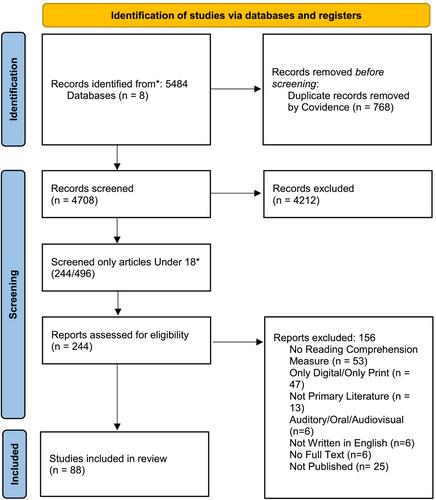Given the growing reliance on digital devices, an increasing number of studies have examined the effects of text medium on reading outcomes in development; however, the results have been mixed. The goal of this systematic review is to look at how print and digital formats affect reading comprehension, engagement and other reading outcomes (e.g. vocabulary, reading speed) in children and adolescents aged 1–17 years old while also considering the influence of several participant, task and study characteristics.
A comprehensive search strategy involving seven electronic databases yielded 88 eligible articles comparing digital and print formats on reading outcomes published between 2000 and 2023 (3 reviewer inter-rater reliability: k = .54–.78). Three major characteristics were coded: participant-level (grade/age, diverse populations, testing language); task-level (text-genre, shared reading, digital comparability); study-level (publication recency, study quality) characteristics. Contingency tables were created for all studies, then for each reading outcome and for participant, task, and study characteristics separately to classify the percentage of studies that demonstrated outcomes favouring print, digital, no difference or reliance on specific reading measures or other factors.
Except in the case of engagement as an outcome, the most common finding was no difference between digital and print. When participant, task and study characteristics were examined separately for the various reading outcomes, the results varied. More studies examining reading comprehension (particularly of informational text and in older children) found ‘print is better’, whereas ‘digital is better’ was more common in studies examining engagement, other outcomes such as vocabulary and diverse learners.
This review highlights the importance of examining multiple interacting factors when studying the impact of print versus digital mediums on reading outcomes in children and adolescents.



